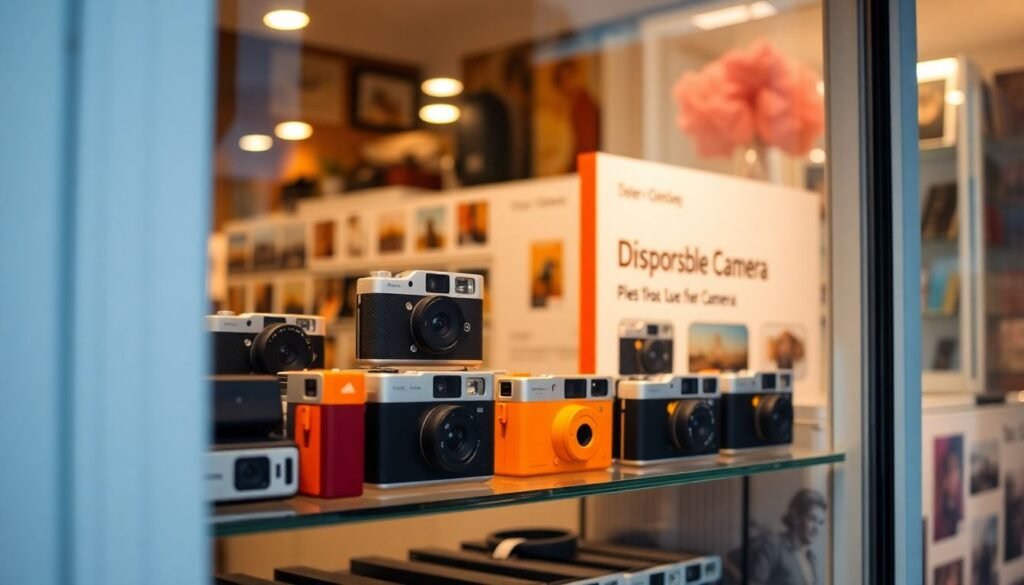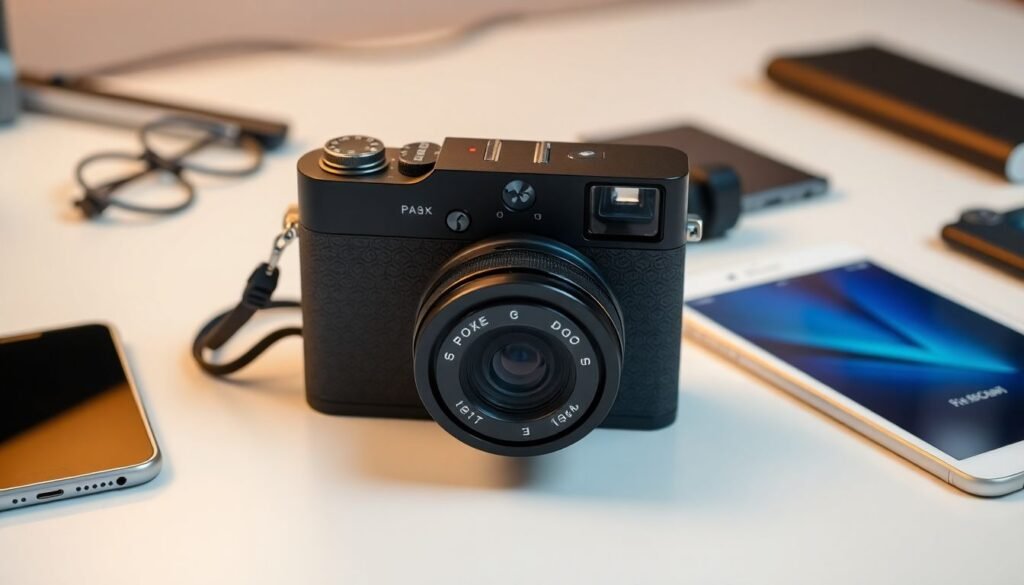Physical Address
304 North Cardinal St.
Dorchester Center, MA 02124
Physical Address
304 North Cardinal St.
Dorchester Center, MA 02124

Disposable cameras were once a staple for travellers, party-goers, and casual photographers alike. With their easy-to-use design and built-in film, they allowed people to capture memories without needing an expensive camera.
But with technology evolving rapidly, disposable cameras have largely become a relic of the past. However, they still hold a place in modern photography culture, and their pricing over time is an interesting subject for photography enthusiasts.
A disposable camera, also known as a single-use camera, is a simple camera that comes pre-loaded with a roll of film. Unlike traditional cameras that can be reused, a disposable camera is meant to be discarded after the film is used up.
Once all the photos are taken, the entire camera is handed over for film development, after which it’s usually thrown away.

The disposable camera first gained traction in the 1980s and 1990s. These cameras were produced by big brands like Kodak and Fujifilm and offered an affordable alternative to owning an expensive film camera.
With a low entry cost and ease of use, disposable cameras became a household staple for capturing casual, everyday moments.
By the mid-2000s, as digital cameras and smartphones became widespread, the popularity of disposable cameras declined. However, they have seen a resurgence in recent years due to the retro charm and the nostalgic feeling of film photography.
Despite the convenience of modern smartphones, disposable cameras continue to enjoy a cult following. Their appeal comes from their simplicity, the thrill of not knowing what the photo looks like until it’s developed, and the unique quality of film that digital cameras struggle to replicate.
Events like weddings, road trips, and concerts often see disposable cameras being used to capture candid moments in a fun, low-pressure way.

In the 1980s and 1990s, when disposable cameras were at the height of their popularity, the price of one typically ranged between £5 to £10.
This made them an affordable option for those who didn’t want to invest in a more expensive camera or deal with the technicalities of handling film rolls.
Brands like Kodak’s “FunSaver” and Fujifilm’s “QuickSnap” were commonly found in supermarkets, convenience stores, and photography shops.
The pricing remained fairly stable throughout the years, with only slight variations depending on factors such as film quality and camera features.
Several factors influenced the cost of disposable cameras during their prime:

Today, disposable cameras can still be found in stores, although they’re no longer as cheap as they once were. The price for a disposable camera today ranges from £10 to £20, depending on the brand, the film quality, and any additional features.
While you may find some cheaper models, premium options like waterproof or high-resolution cameras are priced towards the higher end of this spectrum.
Here are some examples of the current price range for popular disposable camera brands:
The price can vary slightly depending on where you purchase them, with online stores often offering bundles or discounts.

The price of the camera itself is just part of the cost. Once you’ve used all the exposures, you’ll need to get the film developed. The cost of developing film from a disposable camera typically ranges from £10 to £15 for prints and digital scans.
This brings the total cost of using a disposable camera closer to £30 or more when you include both the camera and the film development.
With smartphones in nearly everyone’s pocket, you might wonder if it’s worth the hassle to buy and develop film from a disposable camera.
While digital alternatives are far more convenient and cost-effective in the long run, disposable cameras still offer a unique experience that many find charming.
The key difference lies in the aesthetic: disposable cameras produce grainy, unpredictable images that have an authentic, retro feel—something that’s hard to replicate with digital filters.
For special occasions, events, or creative projects, this could justify the extra cost.

Despite being less common than they once were, disposable cameras are still readily available both in physical stores and online. You can find them in major retailers like:
For those who prefer a wider selection, online retailers often stock various brands and styles, offering both single units and bulk purchases.

If you’re looking to save money on disposable cameras, here are a few tips:
While disposable cameras are more of a novelty item these days, they can still be a worthwhile investment for specific occasions.
Whether you’re after the vintage feel of film, or you just want a fun, low-tech way to capture memories, disposable cameras offer a unique experience.
However, for everyday photography, the convenience, and cost-effectiveness of digital options generally outweigh the charm of a disposable camera.
That being said, the resurgence of interest in film photography suggests that disposable cameras will continue to have a niche market.

One major downside to disposable cameras is their environmental impact. Since these cameras are designed to be used once and discarded, they contribute to plastic waste.
Some manufacturers have made efforts to reduce this by offering recyclable components, but the sustainability concerns remain. If you’re environmentally conscious, a reusable film camera or digital alternative might be a better choice.
Disposable cameras may no longer be a photography essential, but they remain a fun and nostalgic way to capture moments.
The cost of disposable cameras has increased over the years, but they are still an affordable way to experience film photography. While they may not be as practical as digital alternatives, they offer a unique experience and aesthetic that continues to appeal to many.

How many photos can you take on a disposable camera?
Most disposable cameras come with 24 to 36 exposures, meaning you can take 24 to 36 photos.
Can you still buy disposable cameras in 2024?
Yes, disposable cameras are still available for purchase both online and in physical stores.
How long does it take to develop disposable camera film?
Film development typically takes 3-7 days, depending on the service provider.
Are disposable cameras environmentally friendly?
No, disposable cameras contribute to plastic waste, though some brands offer recycling programs.
What makes disposable cameras different from digital cameras?
Disposable cameras use film to capture images, which must be developed, while digital cameras store photos electronically for immediate viewing.